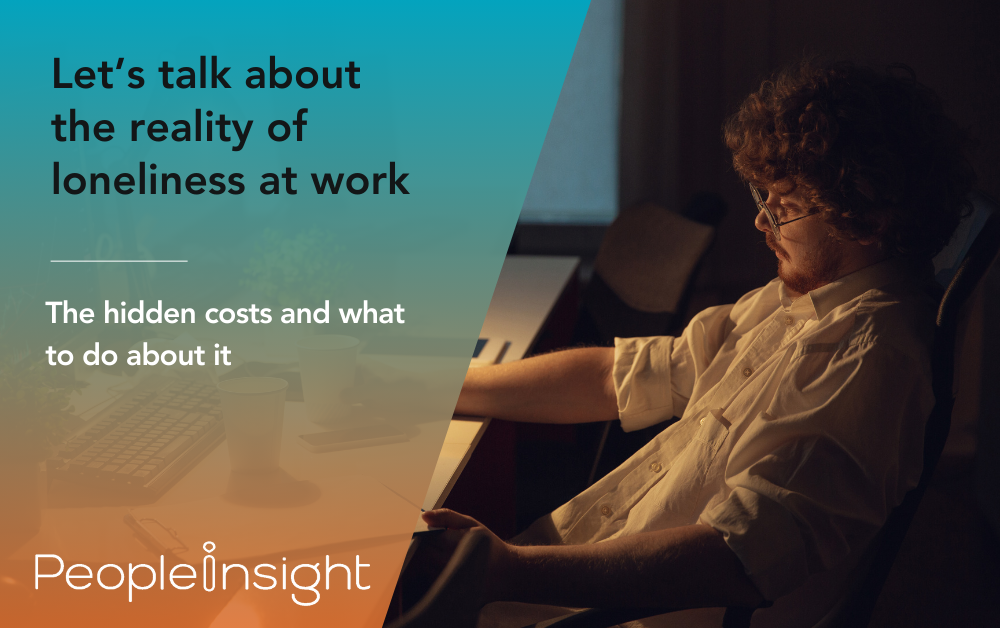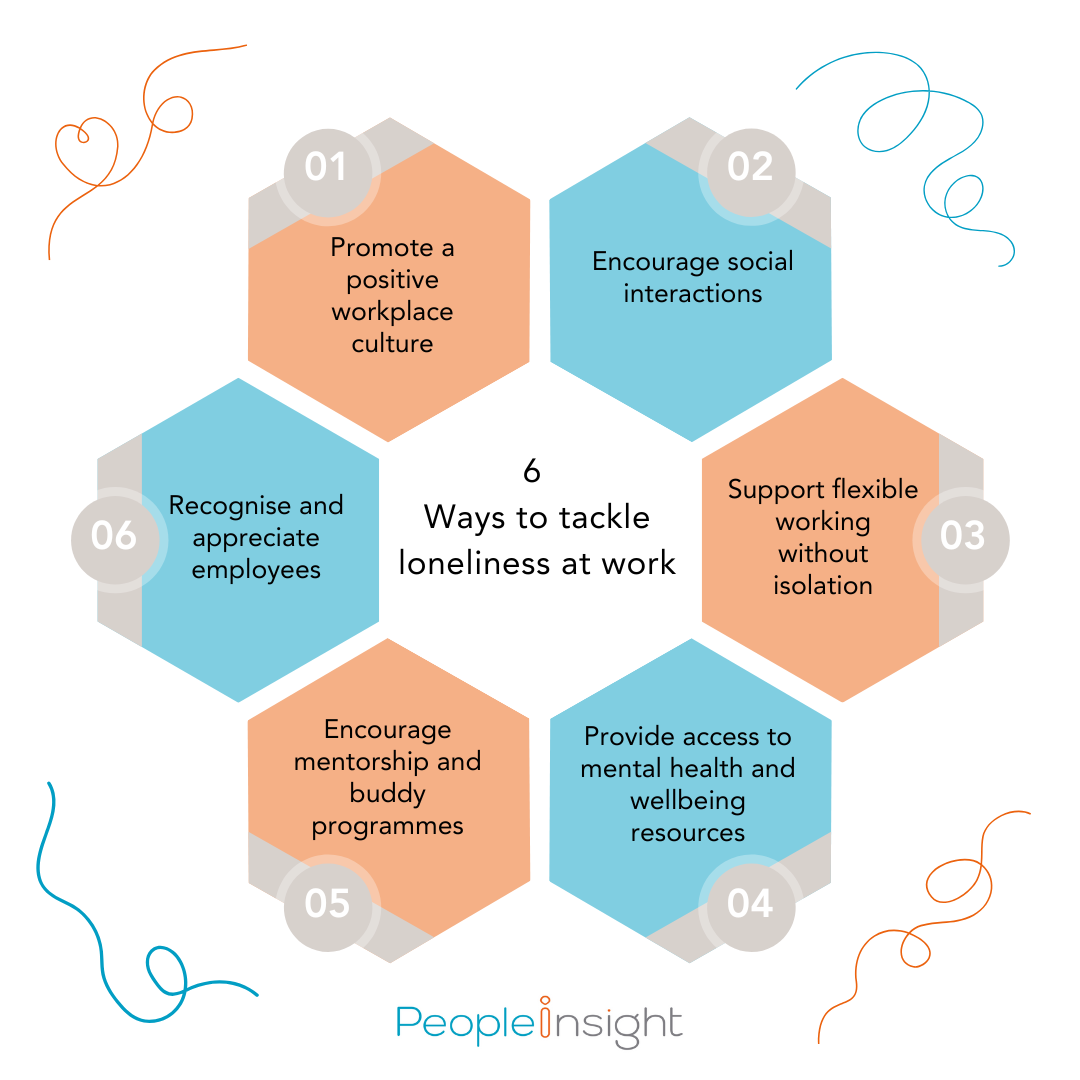
Loneliness at work is an issue that often goes unnoticed — yet it carries heavy consequences for employees and organisations. We have a tendency to associate loneliness with social isolation in personal life, but unfortunately, it is just as prevalent in the workplace — even in environments filled with people.
The impact of workplace loneliness extends far beyond individual wellbeing, affecting productivity, employee engagement and overall organisational performance.
Let’s take a look at the issue of loneliness at work — the hidden costs, why it happens and, most importantly, how to fight it.
Related: How to beat the back to work blues and maintain morale
It’s not just the employees themselves who are impacted when it comes to loneliness — it’s the companies, too. Let’s explore each in turn.
Feeling a deep sense of loneliness at work can have profound effects on an employee’s mental and physical health. Research has shown that chronic loneliness is linked to increased stress, anxiety and depression. Employees who feel isolated are more likely to experience burnout, struggle with motivation and have lower confidence in their roles.
A study by the Campaign to End Loneliness found that people who are frequently lonely are more likely to report lower job satisfaction and reduced workplace engagement. Another study published in the Harvard Business Review found that lonely employees are less productive and demonstrate lower levels of commitment to their organisation.
Physically, loneliness has been linked to increased levels of cortisol, the stress hormone, which can contribute to a weakened immune system, higher blood pressure and a greater risk of cardiovascular disease. So it’s clear to see that feeling disconnected and feeling profound loneliness at work doesn’t just affect how employees feel — it directly influences their health and performance.
The effects of loneliness at work extend beyond individuals, posing very real challenges for organisations.
Employees who feel isolated are less likely to collaborate well, contribute ideas or take initiative. This lack of psychological safety and engagement can lead to reduced innovation and problem-solving within teams.
Financially, the cost is substantial. It’s been estimated that loneliness costs UK employers £2.5 billion annually due to increased absenteeism, lower productivity and higher turnover rates. Employees who feel disconnected are more likely to leave their jobs in search of a workplace where they feel valued and included, increasing recruitment and training costs for businesses.
This topic isn’t a straightforward one. Many factors will come into play, including:
Understanding these causes is the first step toward addressing loneliness in a meaningful way.
Below, our dedicated HR experts have put together are six key strategies organisations can implement to begin to combat workplace loneliness — it’s worth noting that implementing these changes will likely take a while, but every little effort will add up to meaningful change over time.

A workplace culture that prioritises connection and inclusion can significantly reduce loneliness. Employees should feel encouraged to engage with their colleagues socially and participate in meaningful interactions.
Leaders play a huge role when it comes to setting the tone — encouraging collaboration, acknowledging contributions and creating an open dialogue can help employees feel part of something bigger than themselves. Providing social spaces, such as communal break areas or virtual lounges for remote employees, can also facilitate organic interactions.
Developing strong workplace relationships can help employees feel less isolated. Organisations should encourage informal and structured opportunities for employees to connect, such as:
Social interactions have a special way of building trust, ultimately improving collaboration and creating a stronger sense of belonging among employees.
Remote and hybrid work arrangements are becoming more common, but they can lead to increased loneliness if not managed properly. Employers should take proactive steps to keep remote workers engaged, such as:
Loneliness at work is closely tied to mental health. Employers should provide access to wellbeing resources that help employees navigate feelings of isolation, such as:
A supportive work environment where employees feel comfortable discussing mental health challenges can help mitigate the effects of loneliness.
Having strong workplace relationships can significantly reduce loneliness. One way to facilitate this is through mentorship and buddy programmes.
New employees can be paired with more experienced colleagues to help them settle into the organisation. Mentorship programmes can also support career development while creating meaningful connections. These initiatives provide employees with someone to turn to, reducing feelings of isolation.
A lack of recognition can contribute to feelings of loneliness. Employees who feel their contributions go unnoticed may withdraw, reinforcing a sense of isolation. Organisations should prioritise employee recognition through:
Feeling valued and appreciated strengthens employees’ connection to their workplace and colleagues.
Related: Non-financial employee rewards to show employees you care
Understanding how employees feel is the first step to helping them feel better — like a valued member of the team. Employee listening initiatives, such as employee surveys, can provide valuable insights into whether employees feel connected and supported.
By gathering feedback, organisations can tailor their strategies to address specific concerns and track progress over time. A well-executed employee survey can highlight areas for improvement, helping to build a workplace where employees feel genuinely included.
While the ideas above can help to tackle loneliness at work, it’s important to look at loneliness as part of wider employee wellbeing activities.
Use these resources to help support employee wellbeing:
A disconnected workforce is less productive, less engaged and more likely to experience burnout. However, by taking proactive steps, organisations can build a more connected and engaged workforce.
If you want to better understand how your employees are feeling and take meaningful steps to improve their workplace experience, a staff wellbeing survey can help. Get in touch today to learn how our employee listening tools can support a happier, more engaged workforce.

